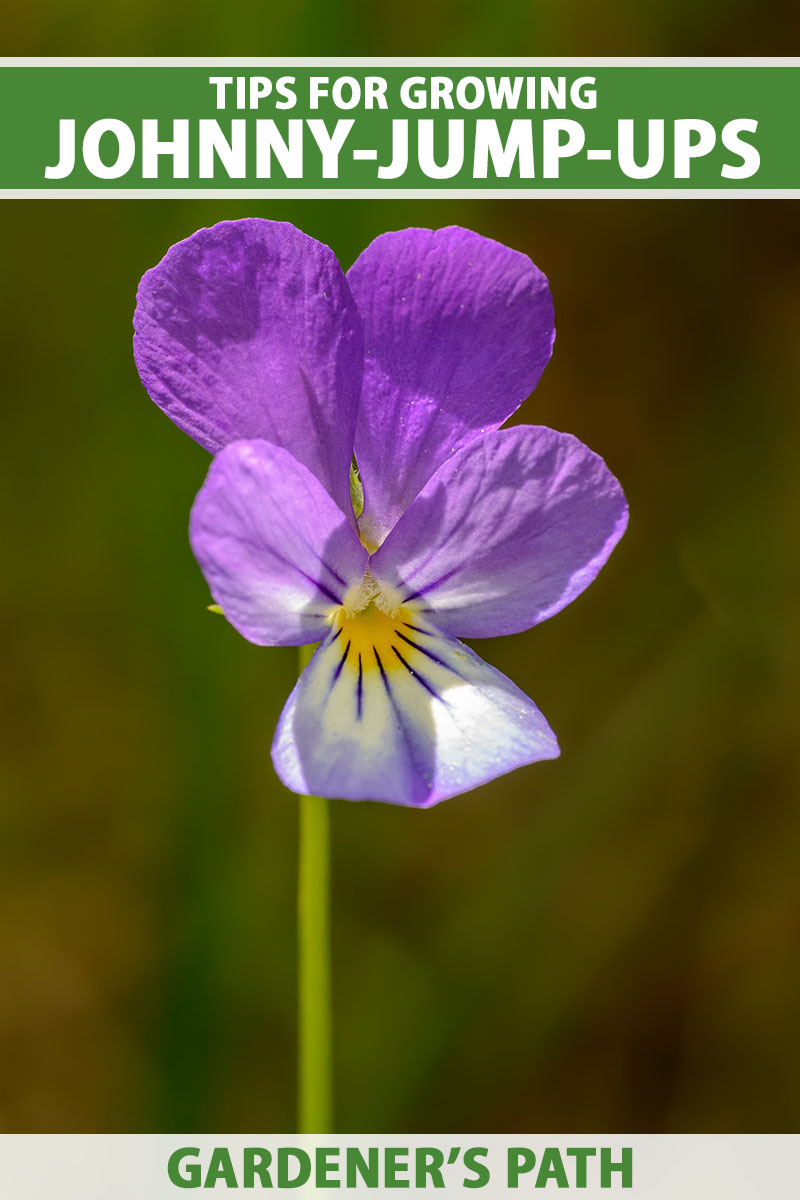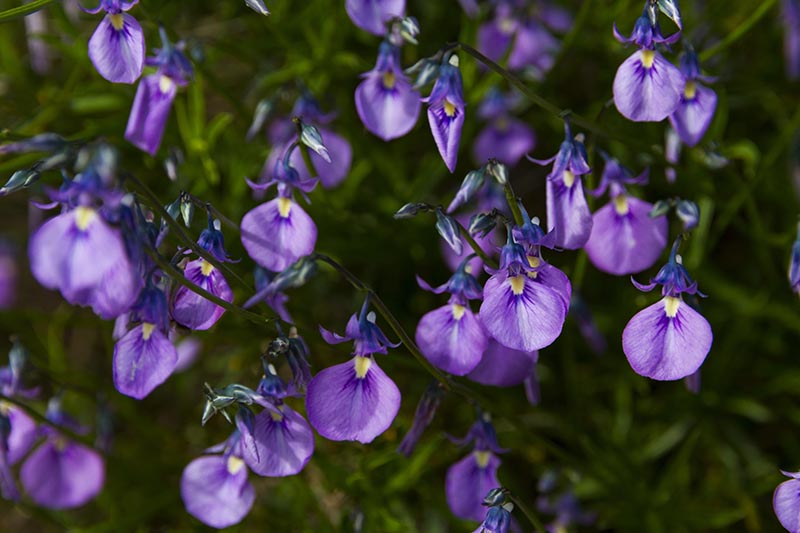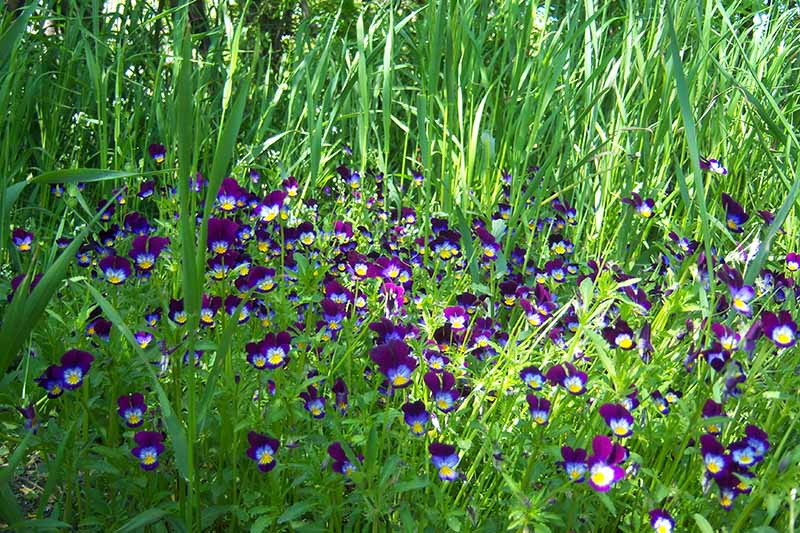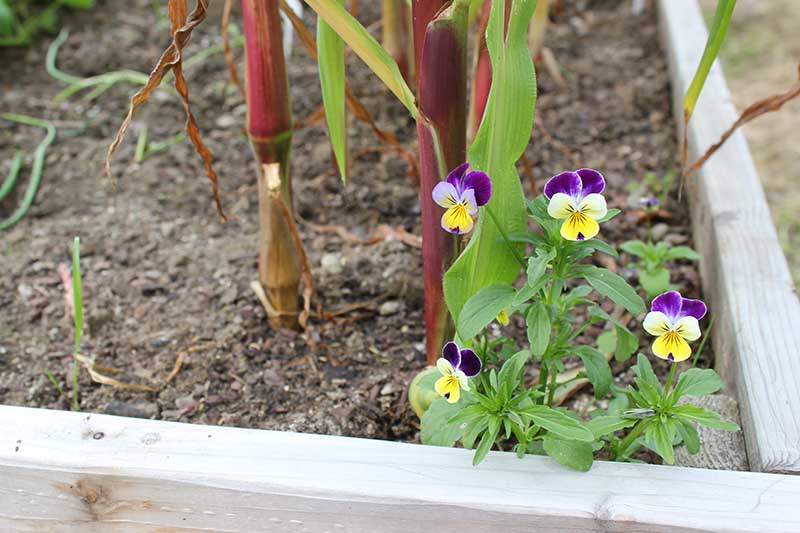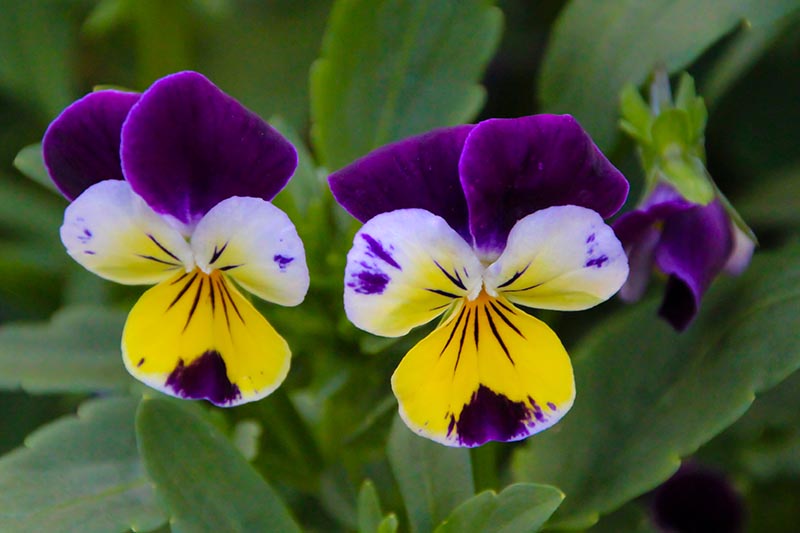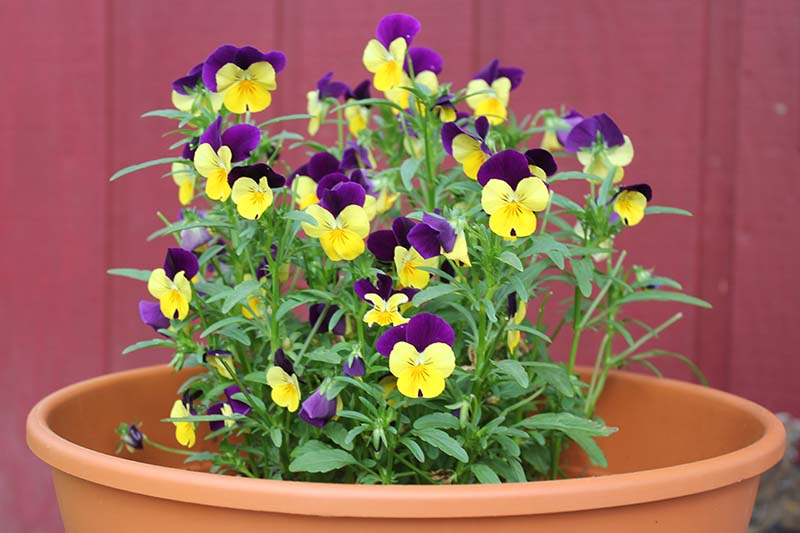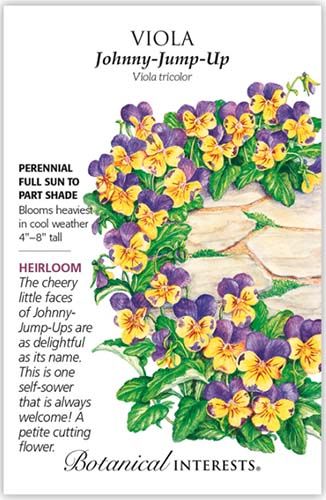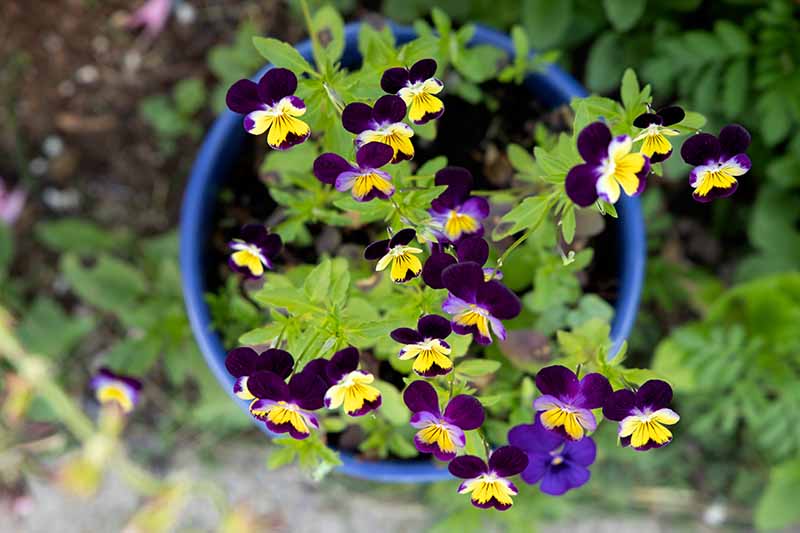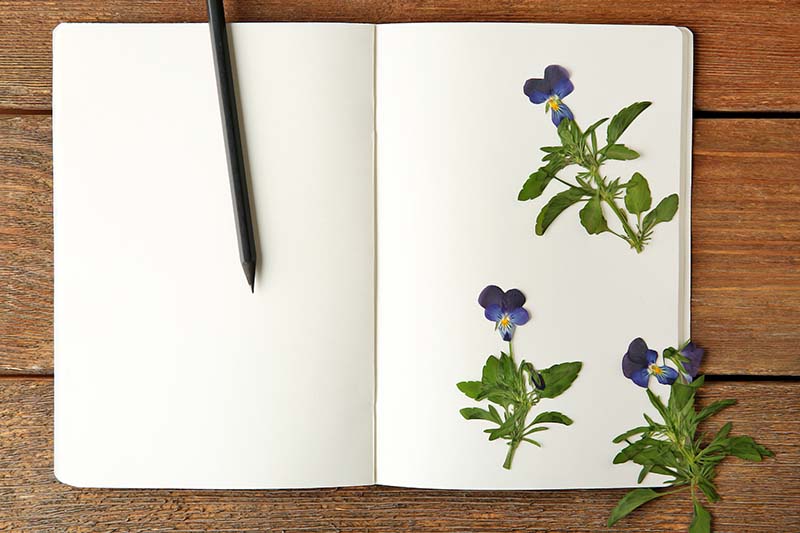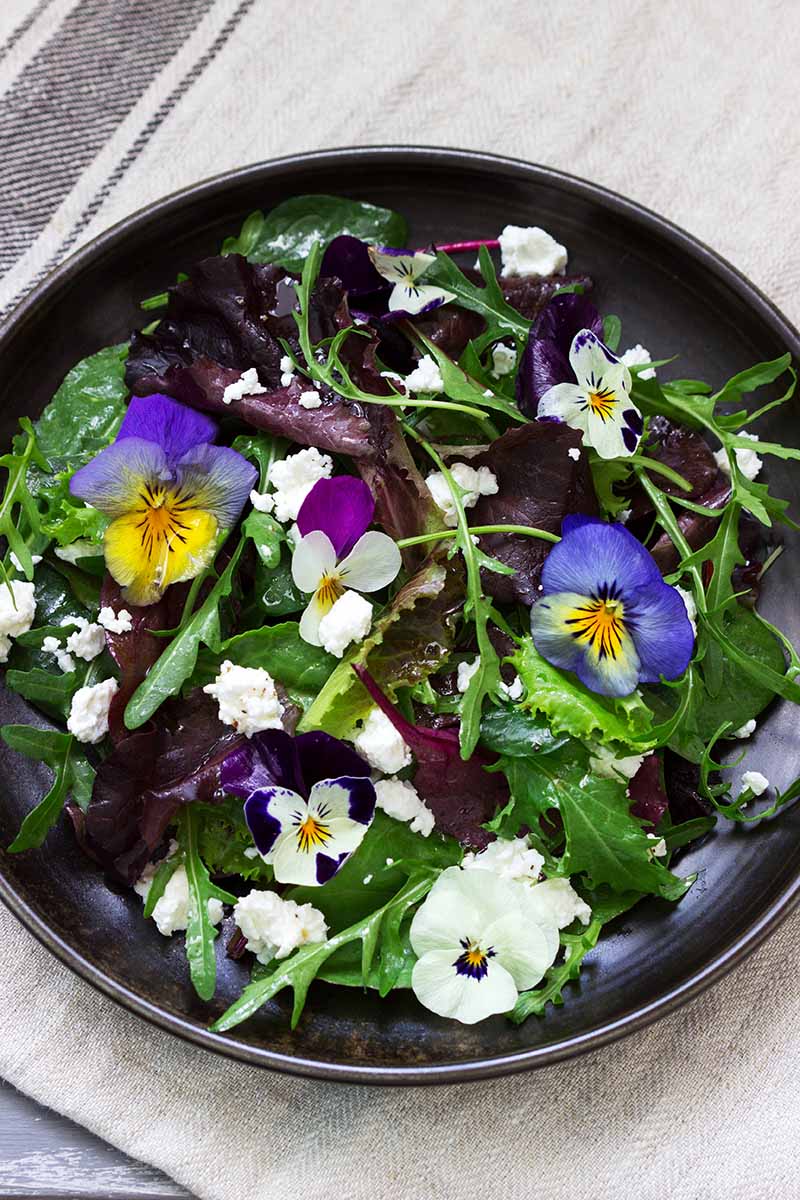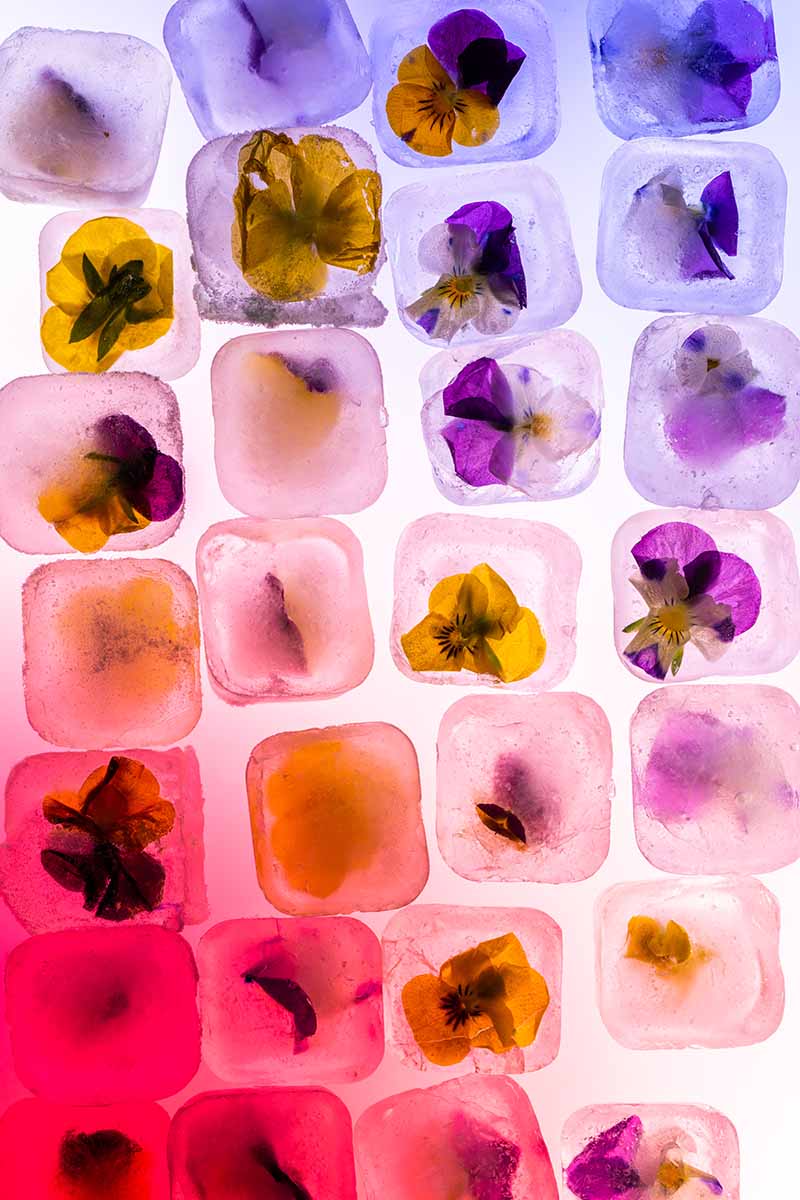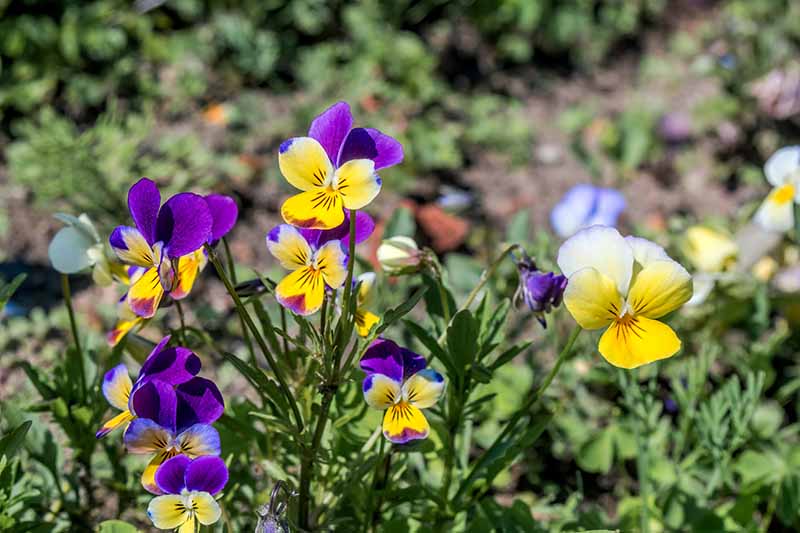Here’s an example: One year, I grew a container of these purple, yellow, and white flowers (Viola tricolor) next to my garden. By the end of the summer, some of the flowers in the original container had gone to seed. With the help of the wind, they’d blown over into the raised beds. They grew so quickly that I swear I saw flowers within a few days of sprouting. It was probably a little longer than that, but not by much. We do have endlessly long days of sun during Alaska summers! We link to vendors to help you find relevant products. If you buy from one of our links, we may earn a commission.
What Are Johnny-Jump-Ups?
Johnny-jump-ups are members of the Violaceae family, which includes 25 genera. Only three of these are really worth noting for the home gardener, however: Hybanthus, Rinorea, and Viola. The majority of the flowers in the Violaceae family are members of these three genera. Native to Australia and other warm regions, Hybanthus flowers are shaped like a pendant or spade, and they have similar colors and whiskers to Johnny-jump-ups. Rinorea plants are actually trees that can grow up to 20 feet tall, and contribute to the understory of tropical rainforests like those in South Africa, Indonesia, and the Pacific Islands. Their blooms are tiny, cream-colored, and bell-shaped. The Viola genus is my favorite of the three. Unlike its more distant relatives in the Violaceae family, Viola plants – of which there are over 500 species – mostly grow in cooler climates. This is part of the reason why they will grow happily in Alaska, and are among the first plants our local gardening centers set out in the spring. Within the Viola genus, some species are classified as pansies or violets. Flowers across these groupings have five petals, but their arrangement is slightly different from group to group. To sum it up:
Pansies have large flowers, and the plants themselves grow six to 12 inches tall; they typically feature blotched faces and have four upward-facing petals and one that faces down.
Violas grow three to eight inches tall, tend not to have blotched coloring, and feature two petals pointing up and three pointing down.
Violets are wildflowers that have tiny flowers and grow about five to eight inches tall; like violas, they feature three downward-pointing petals and two upward-pointing ones.
So where does our sweet Johnny-jump-up fit into all of this? You can think of ol’ Johnny as the original pansy. It served as one of the parent plants to those large-flowered pansies we enjoy today, and was referred to commonly as wild pansy in a time before cultivation of our modern-day pansies began. It comes with a multitude of nicknames: heartsease, heart’s delight, come-and-cuddle-me, and love-in-idleness are among them. The Johnny-jump-up is smaller than the classic, large-flowered pansy, usually growing just six to eight inches tall and wide. Under certain conditions, it can grow up to 10 or 12 inches tall and wide, though. But it’s important to note that while the wild pansy is the “original” Johnny-jump-up, the name can also be used to refer to V. bicolor, V. cornuta, and V. pedunculata species, as well as other field pansies.
Cultivation and History
Native to Europe, this little flower made its way to North America via travelers and traders, probably sometime in the mid-1800s. It now grows untamed across the country, often popping up in fields and along roadsides. Unlike its cousin the violet, our wild pansy doesn’t have much of a scent. But its cheerful face makes up for that! Regardless, this little bloom attracts bees and butterflies. Heartsease is a hardy little flower, too. Though it can survive in a broader range, ideally it prefers soil with a pH between 5.4 and 5.8, which is rather specific. In more alkaline soil where the fungus Thielaviopsis basicola thrives, there’s a chance it’ll develop black root rot. If you want to get the pH exactly right, conduct a soil test and adjust the pH as needed with lime if the soil is too acidic, or sulfur if you’re dealing with conditions that are too alkaline. While heartsease will love you for planting it in rich, well-draining soil, it can thrive in areas with less-than-ideal nutrients, too. If you want to plant a yard full of Johnny-jump-ups instead of a grass lawn, go for it! Heartsease doesn’t mind a bit of light foot traffic. In addition to having attractive flowers, it has interesting, elongated leaves with scalloped edges. Johnny-jump-ups are best suited to USDA Hardiness Zones 3 through 9, growing as annuals in warmer zones, and as biennials or short-lived perennials in cooler areas.
Propagation
It’s super simple to propagate heartsease. You can either sow seeds indoors, direct-sow them outdoors, or transplant them from nursery or indoor starts. Here’s how to carry out each of these methods:
Indoor Sowing
The best time to sow Johnny-jump-ups indoors is six to eight weeks before your area’s average last frost date. Fill a seed starting tray with seed-starting mix and make a quarter-inch indentation in each cell. Drop two seeds inside each indentation and cover it loosely with soil. Water with a spray bottle to avoid dislodging the seeds. Set the tray in a warm location – using a heat mat is ideal. You can also place plastic wrap or a humidity dome over the tray to help keep moisture in. This can help the seedlings germinate more quickly! Keep the soil moist until germination, which can take seven to 10 days. Once germination happens, remove the cover and move the tray into an area that receives six to eight hours of sunlight every day. Now is also a good time to slow down the watering process, and give the plants just one or two deep waterings a week. Make sure the soil stays moist about two inches down, checking it every few days with your finger or a soil moisture meter. As soon as the seedlings have two sets of true leaves, pinch off the smaller one of the two seedlings in each cell to let the larger one soak up all the nutrients. This is also the best time to start hardening them off, as long as the ground outside has thawed and the weather is consistently above 40°F. Put them outdoors for increasing amounts of time every day for a week, adding an hour per day, after which they’ll be ready for transplanting!
Direct Sowing
To direct sow seeds, find a location outdoors that receives six to eight hours of sunlight every day. If you live in Zones 6 through 9, though, your heartsease will do better with partial shade – preferably afternoon shade. If the sun is blazing down on it all day, the plants can wilt. If you’re planting seeds in containers, fill the pots with potting mix. For seeds sown directly into the ground, you’ll need to make sure the soil is rich and well-draining, ideally with a pH between 5.4 and 5.8. Use your finger to make several quarter-inch divots at least six inches apart from one another and from surrounding plants. Johnny-jump-ups don’t mind rubbing shoulders, though, so you don’t need to worry too much about spacing. I often crowd two or three plants together in one container – even if they’re not all six inches apart. Drop two seeds into each divot and cover with soil. Water the plants with a spray bottle or the misting setting on your hose. Within seven to 10 days, germination should occur. If both seeds in each hole germinate, pinch off the smaller one once both plants have two sets of true leaves.
Transplanting a Start
If you picked up a young heartsease at a nursery or you’re ready to transplant your homegrown starts, here’s what to do. First, choose a planting area that receives six to eight hours of sunlight if you live in Zones 3 through 5, or four to six hours of full morning sun with afternoon shade if you live in Zones 6 through 9. Prepare the planting area by digging a hole as deep and wide as the root ball of your young Johnny-jump-up. This is also the perfect time to add well-rotted compost or manure if you haven’t already, or apply 10-10-10 NPK fertilizer according to package instructions. Carefully remove the root ball from its container and place it in the hole. Backfill with soil and water thoroughly. Now sit back and gaze at your cheerful blooms as they nod in the breeze. Or at the leaves, if there aren’t any flowers yet. You’ve earned a break!
How to Grow
Johnny-jump-ups prefer being moist, but not waterlogged. Give them a deep watering about once or twice a week, depending on rainfall, and check the soil with your fingers every couple of days. If it feels dry two inches down, give the plants more water. If it still feels moist, avoid adding water for another few days. Fertilize in the spring or at planting time with a 10-10-10 NPK fertilizer according to package instructions. Mulch with light-colored organic material like straw or bark chips if you live in a hot climate. This will help keep the soil temperature even and will reflect heat instead of absorbing it. Conversely, if you live in a colder area, mulch with dark-colored organic material that will absorb heat. This will also help the soil stay evenly moist between waterings and will keep weeds to a minimum.
Growing Tips
Water once or twice a week, depending on rainfall, keeping the soil moist two inches down.Fertilize in the spring with a 10-10-10 NPK fertilizer.Mulch to preserve moisture and help protect against heat or cold.
Pruning and Maintenance
Mulch will definitely help you to avoid having to weed the flowerbed or container, but you’ll probably have to check the area every week and remove any persistent weeds growing through the mulch. In addition, deadhead spent flowers every week. This will keep the blooms coming for longer! I actually love this chore when it comes to my Johnny-jump-ups. While my four-year-old son plays in the yard, I sit on the front porch next to my planters and pluck spent blooms while I listen to his chatter. He often brings a spent flower or two inside to add to his collection of Interesting Things From the Outdoors. Once, after I told him they are edible, he tasted a petal! (It wasn’t a hit, but hey! I’m proud of my picky eater for trying something new.) It’s also fun to show him the flowers that have gone to seed – I can’t catch them all! – and help him carefully collect the tiny round seeds in his hands. We plant those in their own containers, and because Johnny-jump-ups are so easy to grow and care for, he gets to do all the work himself.
Series and Cultivars to Select
In our roundup of the 39 best violet varieties, you’ll find two blooms that are often referred to as “Johnny-jump-up”: V. pedunculata ‘California Golden’ and V. cornuta ‘Sorbet Denim Jump-Up.’ Below, we have two recommended V. tricolor varieties for you to add to your flowerbed.
Dune Pansy
If you’ve ever been on vacation on the coast of the UK, you might’ve spotted a tiny heartsease with either yellow and white or purple and white petals. This would be a dune pansy, also called a “seaside” or “sand” pansy – a subspecies of V. tricolor known as curtisii – that grows wild along the coastlines of the UK, Ireland, the Netherlands, France, and Germany. The dune pansy thrives in low-water areas like dry grasslands and sand dunes. The remarkable plant has a taproot that reaches up to three feet below the surface of the soil, which is why it adapts so well to dry conditions. This Johnny-jump-up grows four to six inches tall and wide, and is an important food source for several species of fritillary butterflies. They bloom in the spring and again in the fall, and do best in sandy garden soil.
Heirloom Johnny-jump-up
For a classic, tiny tricolored bloom that’ll set your heart aflame with joy, grow a classic heirloom Johnny-jump-up in your garden. The top two petals are dark purple, and the bottom three are yellow and cream-colored with dark purple whiskers. The plants grow four to 12 inches tall and wide, and the flowers are just three-quarters of an inch in size.
Managing Pests and Disease
Out of all the flowers in my garden, Johnny-jump-ups – along with other members of the Viola genus – are the only ones that I rarely, if ever, have issues with. Johnny-Jump-Up Seeds It’s suited to Zones 4 through 8 as a perennial, but will grow as a reseeding annual in colder and hotter zones. You can find packets of seeds available from Botanical Interests. I have yet to see a single aphid on my heartsease, even when the nearby delphiniums were plastered with the tiny insects. Heartsease may be small and delicate-looking, but it’s an incredibly pest- and disease-resistant plant. It’s also resistant to deer and moose. As a bonus, neem oil also helps to control downy and powdery mildew if those diseases pop up after a long period of rain. Appropriate spacing to encourage airflow can help your plants to avoid these as well. Bonide Slug Magic Applying Bonide’s Slug Magic, which you can find at Arbico Organics can help to take care of any slug or snail issues that do occur. Be sure to follow the package instructions. And if you do find aphids on your plants, a quick rinse with the hose followed by an application of neem oil spray, like this one from Bonide that’s available from Arbico Organics, will keep these pests in check. Bonide Neem Oil You may need to reapply the neem oil every five to seven days if you continue to see aphids appearing on the plants. Remember to conduct that soil test to ensure that the pH is below 5.8. Above 6.0, this can create favorable conditions for the fungus that causes black root rot. Oversaturated soil contributes to the onset of this disease as well. If you notice the leaves start turning yellow, you might be dealing with this disease. Apply copper fungicide to the plant according to package directions at the first sign of infection. While you’re at it, spray the surrounding Johnny-jump-ups as well to help prevent the disease from spreading.
Best Uses
Johnny-jump-ups make an excellent ground cover or grass substitute in a lawn. They shine in flower beds, planted among spring bulbs and offering a natural barrier for weeds among your tulips, daffodils, grape hyacinths, and more, beginning to bloom around the same time as many spring bulbs. They also make a pleasing addition to a container garden. That’s my favorite way to use Johnny-jump-ups, because there’s nothing like getting a cheerful nod from the little flowers every day when I get home from running errands. Heartsease thrives in a window box, too, and it’s my dream to install window boxes on my house specifically so I can grow Johnny-jump-ups and other violas there. If you love having fresh flowers in your home, Johnny-jump-ups are an excellent cutting flower, and will stay fresh for seven to 10 days in a vase filled with water. Or, press them between the pages of a heavy book to dry and incorporate them into pressed flower art.
Harvesting Tips and Recipe Ideas
The best time to harvest the flowers for eating is in the early morning or evening, before the heat of midday. Johnny-jump-up flowers taste best when they’re fresh, so we recommend harvesting them the same day you plan to eat them. Pick flowers at their peak bloom time – not after they’ve already begun to curl at the edges. Try to catch them right after they open if you can. Rinse them in cold water right before use. If you’re feeling adventurous, sprinkle a few fresh blooms on your salad for a slightly minty flavor, and a gorgeous look. For a special occasion – or simply to impress your friends with your decorating abilities – try this simple recipe for candied flowers from our sister site, Foodal. You can use the entire, intact flower to make these sweet confections! If you want to incorporate the flowers into your meals but won’t be using them right away, get an empty ice tray and fill each cube halfway with water. Lay one full flowerhead in each well and sprinkle a few drops of water over the top. Freeze for 12 hours and then add more water on top of the frozen flower so that it’s completely covered. After 12 more hours in the freezer, you’ll have super-pretty ice cubes to add to lemon water, iced tea, juice, or cocktails. You can also dry the blooms in a food dehydrator or in your oven. Set the oven to 150°F. Lay the flowers flat on a baking sheet and pop them in the oven for four to six hours, rotating and turning them about every hour. You’ll know they’re dry enough when you touch them and they make a rustling, crunchy sound. Store them in an airtight container in a cool, dark place until you’re ready to use them. Dried flowers make nice additions to sugar cookies. Bake the cookies according to this delicious recipe, also from Foodal, and then take them out of the oven and carefully press the dried flowers into the center of each hot cookie. You may want to use the back of a spoon to do the pressing to avoid touching the hot cookies. Have you ever grown Johnny-jump-ups at home? Give us all your questions and stories in the comments section below. For more advice on growing flowers in the Violaceae family, have a look at these guides next:
How to Care for Pansies in WinterTips for Growing Violets in ContainersHow to Grow Pansies and Violas for Multi-Season Color
